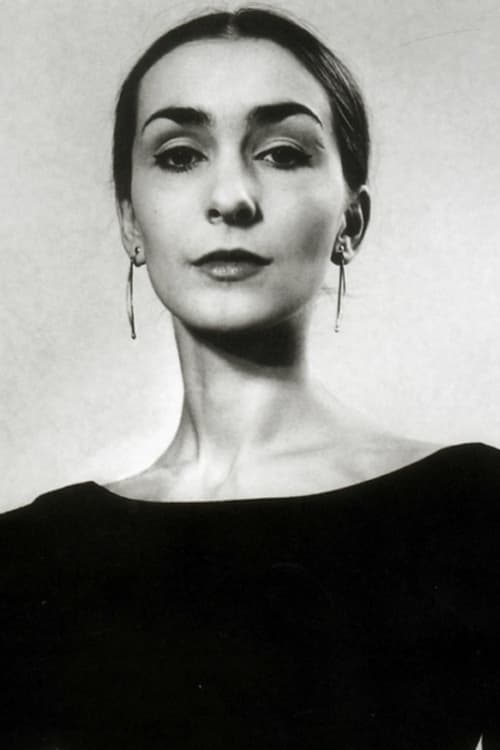Pina Bausch
출생 : 1940-07-27, Solingen, Germany
사망 : 2009-06-30
약력
Philippine "Pina" Bausch (27 July 1940 – 30 June 2009) was a German dancer and choreographer who was a significant contributor to a neo-expressionist dance tradition now known as Tanztheater. Bausch's approach was noted for a stylized blend of dance movement, prominent sound design, and involved stage sets, as well as for engaging the dancers under her to help in the development of a piece, and her work had an influence on modern dance from the 1970s forward. Her work, regarded as a continuation of the European and American expressionist movements, incorporated many expressly dramatic elements and often explored themes connected to trauma, particularly trauma arising out of relationships. She created the company Tanztheater Wuppertal Pina Bausch, which performs internationally.
Description above from the Wikipedia article Pina Bausch, licensed under CC-BY-SA, full list of contributors on Wikipedia.
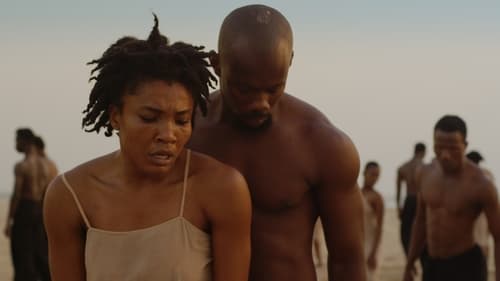
Choreographer
Two of Pina Bausch’s most famous works are rehearsed in Germany and Senegal, championing the choreographer’s legacy through a younger generation of dancers.

Choreographer
Pina Bausch’s iconic choreography to The Rite of Spring danced on the beach in Toubab Dialaw, Senegal. Filmed as the world descended into lockdown, this recording captures the last rehearsal of a specially assembled company of 38 dancers from 14 African countries, and documents a unique moment in their preparations for an international tour that would go on to be cancelled by COVID-19.

Self (archive footage)

Stage Director
Complete recording of Pina Bausch's piece Vollmond (Full Moon) by Wim Wenders.

Choreographer
Complete recording of Pina Bausch's piece Vollmond (Full Moon) by Wim Wenders.

Stage Director
In many ways, "Kontakthof" could be seen as the sum of Pina Bausch's choreographies: the performance takes place at a single location. The high room is completely empty and open to the public - like a showcase. The other three sides are furnished with long rows of chairs, like in a dance school. Men and women sit next to each other. Little by little they rise and all sorts of encounters ensue, some cautious and tentative, others wild and impetuous. Sometimes there is a single couple on the dance floor, sometimes the full cast of 30 dancers. Bausch created this piece with her ensemble in 1978. "Kontakthof" is one of four choreographies by Pina Bausch that the director Wim Wenders recorded in full for his film "Pina - Tanzt, tanzt, oder wir los sind" ("Pina - Dance, Dance, Otherwise We Are Lost").

Choreographer
In many ways, "Kontakthof" could be seen as the sum of Pina Bausch's choreographies: the performance takes place at a single location. The high room is completely empty and open to the public - like a showcase. The other three sides are furnished with long rows of chairs, like in a dance school. Men and women sit next to each other. Little by little they rise and all sorts of encounters ensue, some cautious and tentative, others wild and impetuous. Sometimes there is a single couple on the dance floor, sometimes the full cast of 30 dancers. Bausch created this piece with her ensemble in 1978. "Kontakthof" is one of four choreographies by Pina Bausch that the director Wim Wenders recorded in full for his film "Pina - Tanzt, tanzt, oder wir los sind" ("Pina - Dance, Dance, Otherwise We Are Lost").
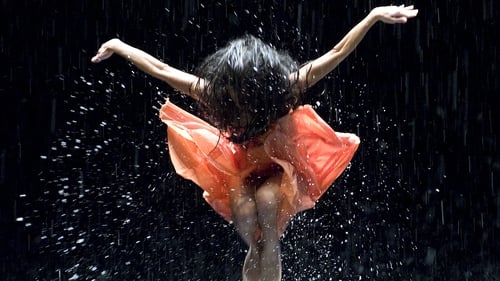
Herself (archive footage)
춤의 역사를 바꾼 천재 무용가 피나 바우쉬의 독창적인 예술세계가 시네마 거장 빔 벤더스에 의해 매혹적인 3D 영상으로 부활한다. 촬영 직전, 피나 바우쉬가 암 진단 5일만에 갑작스럽게 세상을 떠나 작품 자체가 무산될 위기에 처하지만 그녀의 오랜 예술적 동지였던 빔 벤더스는 생전 그녀와의 약속을 지키기 위해서 혼신의 힘을 다해 를 완성한다. 봄의 에너지와 생명력을 폭력적인 군무를 통해 보여주는 <봄의 제전>, 인간의 갈망과 외로움을 미니멀하게 담아낸 <카페 뮐러>, 남녀 관계에서 발생되는 호기심과 욕망, 그리고 잔인함을 다룬 <콘탁트호프>, 비바람 속에서 공포와 두려움의 내면세계와 싸우며 사랑을 갈구하는 거친 춤 <보름달>, 이렇게 피나 바우쉬의 대표작 4편을 통해 벤더스는 사랑, 자유, 슬픔, 갈망, 환희 등 인간의 원초적 감정들을 감각적으로 표현한다. 근육의 미세한 떨림과 땀방울은 물론 무용수들의 감정까지 생생하게 잡아낸 <피나>는 이제까지 어떠한 영화나 공연에서도 경험할 수 없었던 새로운 차원의 감각적이고 경이로운 시각적 여행을 관객들에게 선사한다.

The dance performance “Kontakthof” bears the unmistakable signature of Pina Bausch: it deals with forms of human contact, encounters between the sexes, and the search for love and tenderness, with all its attendant anxieties, yearnings and doubts. It is a dance about feelings, which always pose a big challenge – particularly for young people. Teenagers from more than eleven schools in Wuppertal went on an emotional journey that lasted almost a year. Every Saturday, forty students aged between fourteen and eighteen years of age took part in rehearsals that were led by Bausch-dancers Jo-Ann Endicott and Bénédicte Billiet and intensely supervised by Pina Bausch herself.
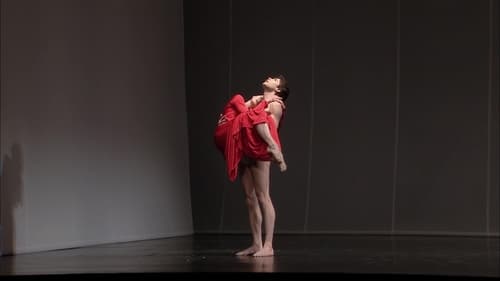
Choreographer
The Ballet de l'Opera National de Paris mounted this production of the late Pina Bausch's dance-opera Orpheus und Eurydike, which Bausch had adapted from composer Christoph Willibald-Gluck and Ranieri de' Calzabigi's 1762 opera Orfeo ed Euridice. As the title suggests, it takes its basic narrative from the myth of Orpheus, and his courageous but ill-fated attempt to rescue his lover Eurydice (also known as Eurydike) from the jaws of the underworld. This particular production finds Yann Bridard dancing as Orpheus and Marie-Agnès Gillot dancing as Eurydike , with mezzo-soprano Maria-Riccarda Wesseling accompanying Bridard and soprano Julia Kleiter accompanying Wesseling. Pina Bausch did the choreography and stage direction, while Rolf Borzik designed the sets, costumes and lighting. The Balthasar-Neumann Ensemble & Choir, under the direction of Thomas Hengelbrock, lend musical accompaniment.

Documentary about German choreographer Pina Bausch.
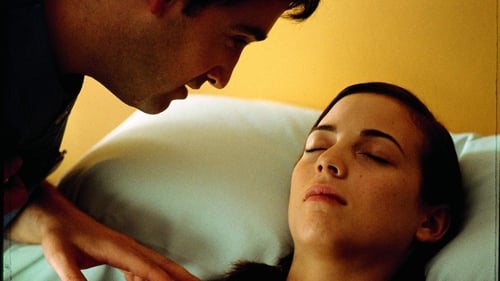
Bailarine
간호사 베니뇨는 발레 학원에서 춤추고 있는 알리샤를 보고, 그녀의 아름다운 모습에 사랑에 빠진다. 갑작스러운 교통사고로 알리샤가 코마 상태에 빠지게 되자, 베니뇨는 헌신적인 사랑으로 그녀 곁을 지킨다. 여행지 기자 마르코는 투우사 리디아를 인터뷰하기 위해 그녀를 찾아간다. 사랑의 상처를 지닌 마르코와 리디아는 서로에게 빠져들며 연인으로 발전하지만 리디아가 투우 경기 도중 사고로 정신을 잃는다. 병원에서 만난 두 남자, 베니뇨와 마르코는 코마 상태에 빠진 그녀들을 보살피며 친구가 된다. 알리샤와 소통한다고 느끼며 끊임없이 말을 건네는 베니뇨와 달리 마르코는 이제 리디아의 사랑을 느낄 수 없다는 사실에 절망한다. 결국 리디아를 떠난 마르코는 그녀의 사망 소식과 함께 베니뇨가 감옥에 수감된 소식을 전해 듣는데...

Choreographer
This first film by choreographer Pina Bausch reflects her method of working as developed with the Wuppertal Theatre of Dance during the 1973/74 season. The film does not tell a story, but is made up of various scenes put together as a collage with scenes set in different locations. The futility of human activity and the search for love make up the film's central theme set against the strains of a Silician funeral march. Filmed on location in Wuppertal, Germany, between October 1987 and April 1989.

Writer
This first film by choreographer Pina Bausch reflects her method of working as developed with the Wuppertal Theatre of Dance during the 1973/74 season. The film does not tell a story, but is made up of various scenes put together as a collage with scenes set in different locations. The futility of human activity and the search for love make up the film's central theme set against the strains of a Silician funeral march. Filmed on location in Wuppertal, Germany, between October 1987 and April 1989.

Director
This first film by choreographer Pina Bausch reflects her method of working as developed with the Wuppertal Theatre of Dance during the 1973/74 season. The film does not tell a story, but is made up of various scenes put together as a collage with scenes set in different locations. The futility of human activity and the search for love make up the film's central theme set against the strains of a Silician funeral march. Filmed on location in Wuppertal, Germany, between October 1987 and April 1989.

Director
As debut of the film series, video footage of the piece Palermo Palermo, which was taken shortly after the piece’s premiere in 1989, has been digitally restored. Thanks to a grant from the Arts Foundation of North Rhine-Westphalia and the Cultural Foundation of the German Federal States, the material produced by Metrovision was acquired from the publishing house L’Arche Éditeur and has now been cut into a film version by the Pina Bausch Foundation.

Self
Chantal Akerman followed famous Choreographer Pina Bausch and her company of dancers, The Tanzteater Wuppertal, for five weeks while they were on tour in Germany, Italy and France. Her objective was to capture Pina Bausch's unparalleled art not only on stage by behind the scenes.

Director
While Pina Bausch was preparing her film The Plaint of the Empress in 1987, the French, British and German co-producers were waiting for a script. No script: no film. That is how the film industry saw things.The discussions dragged on but eventually the TV stations accepted the idea of shooting the film without a script. Someone had the idea of making a "test film" showing what the results of working in Pina Bausch's way could be. That's how this film was born - a documentary on the rehearsals for AHNEN, a piece she was developing at the time. For twenty five years the film stayed in the archives; today it emerges as an extraordinary document. This is how Pina Bausch and her company worked. This is how this work was created, that touched so many people continous to do so today.

Director
Walzer is an excerpt taken from a work by the same name. Pina Bausch premiered it in the summer of 1982 at the Carré Theatre in Amsterdam and filmed it in the autumn of the same year in the theatre of Wuppertal. When in 1986 the German radio station Norddeutscher Rundfunk in Hamburg asked for a recording, Pina Bausch selected and edited the material into the film Walzer.

Pina Bausch created and performed Café Müller for her dance company Tanztheater Wuppertal. The dance was inspired by and based on her childhood memories of watching her father work at his café in Germany during and immediately following World War II. In this silent style featurette, Bausch shows a restaurant after closing, in which the ghosts of the departed customers stumble blindly into walls and onto chairs but fail to find one another.

Director
Pina Bausch created and performed Café Müller for her dance company Tanztheater Wuppertal. The dance was inspired by and based on her childhood memories of watching her father work at his café in Germany during and immediately following World War II. In this silent style featurette, Bausch shows a restaurant after closing, in which the ghosts of the departed customers stumble blindly into walls and onto chairs but fail to find one another.

Principessa Lherimia
항구에 모인 사람들은 모두 오페라계의 인사들로, 전설적인 소프라노 가수 테투아의 장례식에 참석하려고 한다. 그녀가 유언으로 자신의 유골을 자그마한 외딴섬에 뿌려달라고 말했기 때문이다. 당대의 가수들, 지휘자들, 연주자들, 또 이들의 연주를 지원하고 환호했던 귀족들, 왕족들이 모여, 소프라노의 유골을 옮기는 긴 항해 길에 오른다.

Herself
Wuppertal is a drizzly, industrial city on the Rhine and one immediately wonders why Pina Bausch and her avant-garde dance troupe have settled there. A socially engaged documentarian, Wildenhahn is also perplexed by this issue and spends considerable time trying to place Bausch in a context outside of the aesthetic. Still, the dance company's daily life and the excruciating rehearsal and performance schedule is solidly captured. The film begins cleverly: a dance critic offers sagacious comments on ballet dancers finishing their careers at mid-thirty just when, according to Bausch, the "aspects of misery, suffering and fear of death should become an integral part of a dancer's spiritual and psychological make-up." Wildenhahn's camera glides over the dancers' bodies as Bausch leads them through their paces, a consummate teacher. Leaving behind rehearsals of "Bandoneón" and "Walzer," Wildenhahn then ventures out into the streets of Wuppertal searching for the dance of the common people.

An exhilarating, essayistic documentary about the 1980 festival of experimental theatre in the French city of Nancy. Werner Schroeter's favourite of his own films.

Choreographer
...Dancing to the border of exhaustion. Dressed in little, the black earth sticks to their skin. Yes, to the point where it hurts. A document of early Pina Bausch, an authentic recording of one of the most outstanding choreographies of the 20th century.

Director
...Dancing to the border of exhaustion. Dressed in little, the black earth sticks to their skin. Yes, to the point where it hurts. A document of early Pina Bausch, an authentic recording of one of the most outstanding choreographies of the 20th century.
